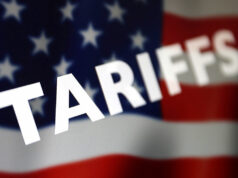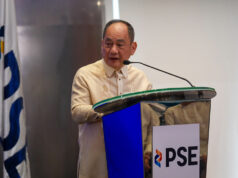We have started a new year, an election year at that, but it doesn’t seem like “out with the old, in with the new” applies. For the senatorial election, that is. Checking the latest survey list, and I have checked it twice and have my own opinion on who has been naughty and who has been nice, I see mostly “old” names in the lead, and “new” names trailing behind.
Unsurprising, really. After all, since the 1960s, the Filipino electorate has had a thing for political families. There are more to political dynamics here than lineage and popularity, of course. But, for the sake of discussion, going by votes alone, these families have managed to get the required numbers to stay in national office for a long time.
There was a Macapagal vice-president in 1957-1961, and president in 1961-1965. Then there was a Macapagal daughter as vice-president in 1998-2001, and as president in 2001-2010. The same daughter was senator in 1992-1998, and, since 2010, has been in Congress to represent a legislative district in Pampanga. She is the current House Speaker.
A Marcos was senator in 1959-1965, and was Senate president in 1963-1965. He later became the president of the Republic in 1965-1986. His son was senator in 2010-2016, and almost became vice-president in 2016. If the son wins a pending poll protest anytime soon, he might just become the country’s No. 2 official until 2022. A Marcos daughter is also now vying for a Senate seat in May.
An Aquino was senator in 1928-1934. His son was senator in 1967-1972. His grandson was senator in 2007-2010. The same grandson was president in 2010-2016. The grandson’s mother was president in 1986-1992. She was a Cojuangco. Her father, Jose, and grandfather, Melecio, had both served in Congress as representatives of Tarlac.
These three political families – Macapagal, Marcos, Aquino – have been major contenders in national politics since the 1960s. In fact, the presidency has always been in their hands in the last 58 years except for three relatively short periods: 1992-1998 (Ramos), 1998-2001 (Estrada), and 2016-present (President Duterte).
There are indicators that a Marcos might again aim for the presidency in 2022. Then, there are persistent but unfounded rumors that another possible presidential contender in 2022 is, in fact, a Marcos relation. If so, can allies of the Macapagal and Aquino camps be far behind? For president or vice-president, will another Villar or another Cayetano give it a try? How about Vice-President Robredo?
To date, only the Macapagal and Aquino families — hailing from the neighboring provinces of Pampanga and Tarlac, respectively, in Central Luzon — have managed to produce “repeat” presidents. Although the Marcos family beats everybody else in terms of total length of presidential term (21 years vs 13 years for the Macapagals and 12 years for the Aquinos). The Marcoses, from Ilocos Norte, also come from the island of Luzon.
Since the Philippine Revolution of 1898, there have been no “repeat” presidents from the political families of Aguinaldo, Quezon, Osmeña, Roxas, Quirino, Magsaysay, Garcia, Ramos, and Estrada. Also, other than Osmeña and Roxas, and President Duterte, all other presidents have come from the island of Luzon. Osmeña and Roxas are both from the Visayas islands, while President Duterte is the first Philippine president from Mindanao.
The Osmeñas and the Roxases remain as contenders, though, despite failing to produce repeat presidents, with scions from these two families still active in national politics. Grandsons of these two presidents are now seeking to return to the Senate in May: former senator Manuel Araneta Roxas, son of former senator Gerardo Manuel Roxas (Senate: 1963-1972); and former senator Sergio Osmeña III, son of former senator Sergio Osmeña, Jr. (Senate: 1965-1971).
President Duterte was the game-changer, I believe, having broken the hold of Luzon and Visayas politicians on the presidency. Whether his success in 2016 as a “Mindanaoan” in getting the presidency will have significant impact on the May 2019 senatorial election is anybody’s guess. However, going over the latest survey, it seems only one politician from Mindanao will make it.
The “Magic 12” in the senatorial survey is composed of incumbent and former senators who come mostly from Luzon, with only one contender from Mindanao and another of Visayan ancestry. There is no room for “new” names in the latest Magic 12 survey, and in this line, expect “balikbayans” to compose our Senate from 2019 to 2025.
According to a news report, citing a recent release by SWS, with five months to go, Luzon politicians and incumbent senators Cynthia Villar and Grace Poe lead the senatorial survey for the May 2019 election. Senator Villar is at No. 1 with a voter preference of 62%, followed by Senator Poe with 60%. Third to fifth are former senator and now Taguig Rep. Pia Cayetano, and incumbent Senators Sonny Angara and Nancy Binay, all from Luzon.
Sixth in the survey is former senator Lito Lapid, who hails from Pampanga in Luzon, followed by incumbent Senator Aquilino Pimentel III (from Misamis Oriental, and the only one from Mindanao), and former senator Jinggoy Estrada, also from Luzon. In 10th is former senator Mar Roxas (of Visayan ancestry), followed by Ilocos Norte Gov. Imee Marcos and incumbent Senator Joseph Victor Ejercito, who are both from Luzon as well.
No. 13 and 14 were former senator Serge Osmeña (of Visayan ancestry) and incumbent Senator Paolo Benigno Aquino IV (of Luzon), while no. 14 and 15 were former special assistant to the President Christopher Go and former National Police chief and Bureau of Corrections head Ronald dela Rosa, allies of President Duterte. They were followed by former presidential political affairs adviser Francis Tolentino and former Senate president Juan Ponce Enrile, also both from Luzon.
In this regard, despite what President Duterte has achieved for Mindanao in 2016, I don’t think we can expect similar changes in our politics in May 2019 or in years to come. Luzon politicians appear set to continue to dominate, in the same way that we have seen the same political families, groups, or camps prevail since we gained “independence” in 1946.
Despite having gone through three constitutions (1935, 1973, and 1987), numerous coups (1986-1989), two political upheavals (1986 and 2001), and nine years of nationwide martial rule (1972-1981) under Proclamation 1081, it is apparent that all these political changes thus far have not actually resulted in much change in who we elect to office.
Marvin Tort is a former managing editor of BusinessWorld, and a former chairman of the Philippines Press Council
matort@yahoo.com



